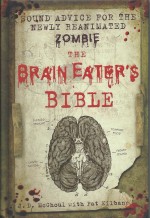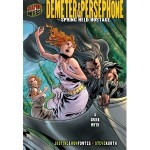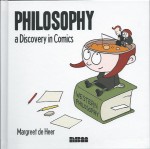
By Ricardo Cortés (Akashic Books)
ISBN: 978-1-61775-134-9
Win’s Christmas Gift Recommendation: potent, punchy and thought-provoking fodder to enjoy after overindulging… 9/10
The astounding power of graphic narrative to efficiently, potently and evocatively disseminate vast amounts of information in layered levels has always been best utilised in works with a political or social component. That’s seldom been better demonstrated than in this stunning and scholarly new picture book from Ricardo Cortés.
Born in 1973, illustrator and artistic intellectual activist Cortés has had a sublimely seditious career thus far. He has made waves in Vanity Fair, Entertainment Weekly, The New York Post, The Village Voice, San Francisco Chronicle, and been challenged on CNN and FOX News after his controversial children’s book Marijuana: It’s Just a Plant – written by Marsha Rosenbaum – was mentioned in Congress. He followed up by illustrating Adam Mansbach’s Times Best-Selling Go the F**k to Sleep and its sequel Seriously, Just Go to Sleep, and created the colouring book I Don’t Want to Blow You Up! about famous Muslims who aren’t terrorists.
In 2011 the artist received a grant from the Department of Cultural Affairs’ Greater New York Arts Development to create Jury Independence Illustrated – a public booklet dealing with Jury Nullification produced with the intention of educating potential jurors about their powers to acquit if they disagree with specific laws or judicial rulings. Clearly a born troublemaker…
His latest project is a brilliantly engrossing exploration of acceptable addictions blending scrupulously scholarly reportage with a seductively beautiful selection of captivating images and historical reproductions.
The story starts with the origins and history of ‘Coffee‘ from its mythic discovery as a berry fruit for goats in Ethiopia, through being taken up by Yemeni traders who disseminated “qahwah†throughout the Islamic world. A proven intoxicant, concerns over its salubrity, morality and legality grew and it was soon being trafficked by desperate men. In the 16th century the beverage was banned in Mecca, Cairo and elsewhere, but its taste and effects were impossible to resist.
By the time “kahveh†reached Turkeytrading in the beans carried the death penalty. As “Coffee†it reached Europein the 17th century, touted as a miracle cure-all for everything from headache to miscarriage and grew explosively into an intellectual’s seditious vice. In 1675 Charles II ordered it suppressed and closedEngland’s Coffee Houses by Royal Edict.
Things got even stranger in 1820 after the alkaloid “Caffe-ine†was finally distilled from the coffee cherry…
The rest of caffeine’s turbulent and torturous legal and commercial progress to today’s status as the world’s most popular stimulant is followed by the story of ‘Cola and Coca’ in which caffeine’s other singularly popular method of natural dissemination is examined.
The Kola Nut of West Africa is amazingly high in the stimulant alkaloid and has been used for centuries – if not millennia – as a energy-intensifying fortifier by the various tribes and nations either by chewing the raw nut or brewing a drink called “colaâ€.
Cola is one of the most popular ancient beverages on Earth and when in 1886 Dr. John Pemberton devised his own formulation – dubbed Coca-Cola – by adding a dash of coca leaves, his medicinal tonic, after an initial shaky start, grew to become the most monolithic drinks brand on Earth.
…But not, apparently, without a little government help…
Coca originally came from the Andes of South America where for centuries indigenous peoples used the herbal bounty as a pick-me-up. The Indios chewed coca leaves the way we do gum in the west and in 1499 explorer Amerigo Vespucci brought back tales of the wonder herb’s propensity to promote feats of concentration and endurance.
In 1859 Dr. Karl Scherzer returned to Austria after a two-year scientific voyage aboard the Frigate Novara with sixty pounds of coca, as previously requested by German pharmacologists. Soon after doctoral student Albert Niemann isolated from the samples a new alkaloid which he dubbed “Coca-ineâ€.
This fresh medical marvel, its transparent crystals easily derived from coca leaves, was from 1884 enthusiastically prescribed by the likes of Sigmund Freud for melancholia and oculist Carl Koller discovered it to be an incredible regional (or as we now know them “localâ€) anaesthetic, allowing unprecedented new surgical procedures to be performed. It was also used as a commonplace treatment for toothache, labour pains, nervousness, fatigue, impotence, asthma and as a cure for morphine addiction – hence Pemberton’s inclusion of the stuff in his health tonic.
By 1889 cases of compulsive use and abuse began to be reported, leading to heated medical debate, and when the era’s obsessive racial concerns were added to the mix (“cocaine made negroes insane†and it was peddled by “greedy Jewish doctorsâ€) the writing was on the puritanical wall for the foreign import.
On a rising tide of public disapproval the 1914 Harrison Narcotics Act prohibited Cocaine use and coca importation in theUSA. However due to some truly unbelievable backroom dickering, the already powerful Coca-Cola Company secured a constant supply of the banned substance – re-designated “Merchandise No. 5†– for their Schaefer Alkaloid Works in New Jersey – still thriving today as the Stepan Chemical Company.
This mercantile miracle was all due to diligent work of Commissioner Harry J. Anslinger of the Federal Bureau of Narcotics and Ralph Hayes, a former aide to theUS Secretary of War and from 1932, a vice President of the Coca-Cola Company.
Anslinger was a rabid anti-drug zealot, so just why did he spend 40 years – under seven different US Presidents – enforcing draconian and often expensive, nigh-impossible bans on a vast number of natural pharmaceutical products whilst actively securing and defending Coca-Cola’s uninterrupted supply of cocaine?
He even facilitated clandestine schemes to grow coca on American soil and his campaign was so successful that American policy became UN and global norms, forcibly negating all the proven scientific benefits of resources which grew naturally in countries which could never afford Western drugs and chemical advances.
Trust me; you only think you know the answer…
Astonishingly addictive and intoxicatingly revelatory, Coffee, Coca & Cola offers an impressively open-minded history lesson and an incredible look at the dark underbelly of American Capitalism. Exposed here through telling research and beguiling illustrations is a catalogue of hypocrisy wherein successive political administrations and big business always found ways to place commercial interests ahead of any specious moral imperative ingenuously forwarded by the “World’s Copâ€.
Learn here how corporations and statesmen conspired to ruthlessly crush the traditions, customs and rituals of other nations and cultures (as recently as 2010, America acted to suppress many sovereign South American countries’ social, spiritual, medicinal and nutritional use of coca) and continue to prevent poor countries utilisation of such ancient natural resources as caffeine and cocaine whilst peddling products inescapably wedded to both American Expansionism and Ideology…
A stunning, hard cover coffee-table book for concerned adults, this captivating chronicle is a true treasure – or perhaps in the parlance of the idiom I might just say – lip-smacking, trust-quenching, cool looking, stimulating, motivating, hard talking, fool busting, fast thinking, hard quizzing… and unmissable.
© 2012 Ricardo Cortés. All rights reserved.



